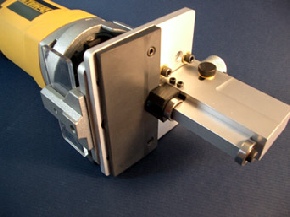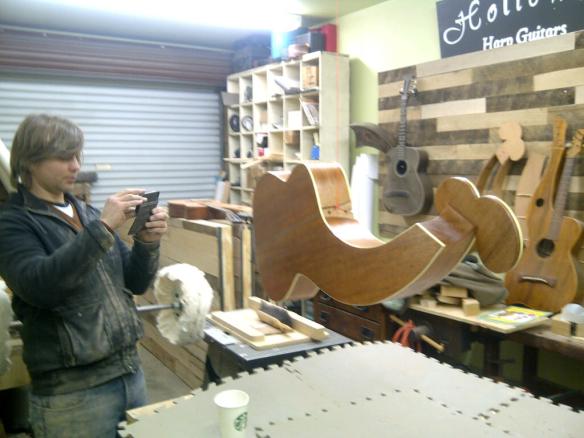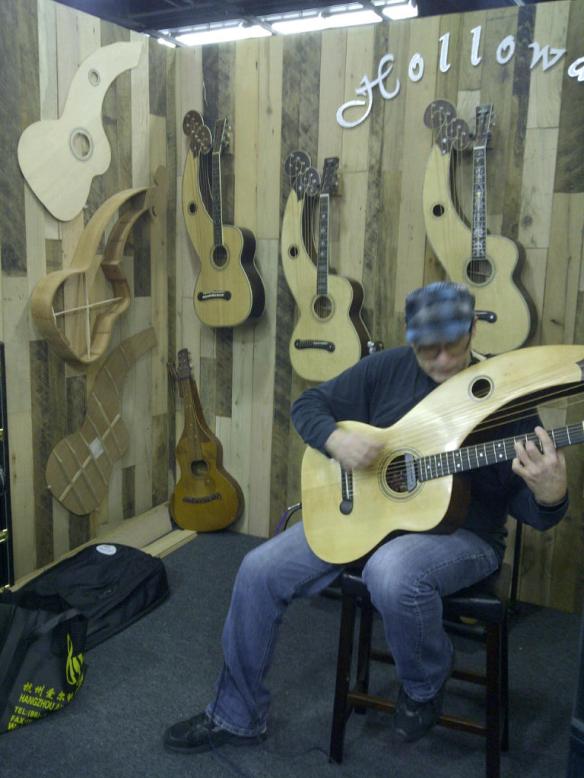Now we come to the point where it is looking like an instrument!
 The top and back have been trimmed and the binding channels have been cut. This is pretty much the same as on any guitar… just more of it! Any of the systems by Stew-Mac, LMI, Luthier Tool and custom setups etc. will work. For this set up Scott used the Luthier Tool binding cutter with a bearing bit setup from LMI. Most of these cutter jigs use some sort of trim router and this is no exception.
The top and back have been trimmed and the binding channels have been cut. This is pretty much the same as on any guitar… just more of it! Any of the systems by Stew-Mac, LMI, Luthier Tool and custom setups etc. will work. For this set up Scott used the Luthier Tool binding cutter with a bearing bit setup from LMI. Most of these cutter jigs use some sort of trim router and this is no exception.  This picture is from their website http://luthiertool.com/binding%20cutter.html
This picture is from their website http://luthiertool.com/binding%20cutter.html
As with any system, it takes some practice to become proficient. The jig has two bearings one on the top and the other on the bottom of the leg. These have to be in contact with the sides in order to maintain proper depth and width.
The neck on this guitar is a conventional bolt on slot head so I won’t go into much detail on that as I’ve covered this on other posts.
 The finish, while pretty straight forward is complicated by the size of the instrument. Some creative ways of positioning it for spraying are necessary.
The finish, while pretty straight forward is complicated by the size of the instrument. Some creative ways of positioning it for spraying are necessary.
I use a length of 3/4″ pipe and attach it to a saw horse and to the body where the neck attaches.
The other issue is supporting the body for fretting when the finish is done and the neck attached. A Taylor fret buck is worthless because the harp arm won’t support the edge of the buck so it will give too much when it’s in use. I use an arbor press when fretting and in this case the body has to be supported when fretting over it. To solve this, I made a jack to support the top. I used two pieces of wood about 1/4″ thick, one for the top and one for the back to distribute the pressure and put a small scissor jack http://www.stewmac.com/shop/Tools/Special_tools_for_Brace_repair/Scissor_Jack.html
to support the pressure.
In the future, I would probable use a neck joint that would allow fretting before the installation of the neck to the body.
Other than the things mentioned, building a harp guitar in theory is not much different than a standard 6 string. In practice the larger scale and added strings do add to the complexity above and beyond a 6 or 12 string.  Photo of Don Alder by Scott Burwell Holloway.
Photo of Don Alder by Scott Burwell Holloway.

This is so cool! I wish I could have my own.
This is so interesting!